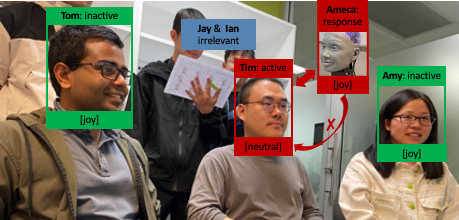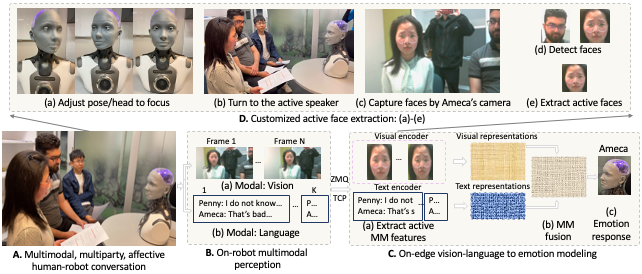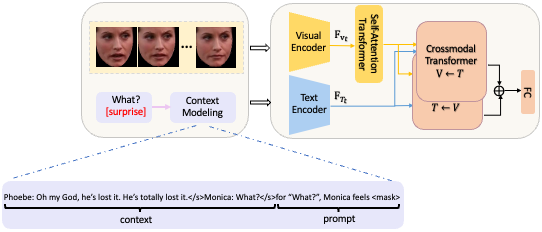AI and robotics are ushering in a new era – humanoid AI [1].
Humanoid AI is emerging as the next major advancement in AI and robotics, paving the way for general humanoid intelligence, artificial general intelligence and artificial narrow intelligence.
Our humanoid AI Ameca – real-time, multimodal, affective interactive humanoid robot – driven by generative AI, LLMs, LMMs and integrating AI technologies

Humanoid AI: Synergizing generative to humanlevel AI into humanoids
In the approximately 60-year journey of humanoid robots, humanoid robots usher in a new era – AI humanoids, AI-powered humanoid robotics. The AI humanoids synergize the advancements in large language models (LLMs), large multimodal models (LMMs), generative AI, and human-level AI with humanoid robotics, omniverse, and decentralized AI, transitioning from human-looking to humane humanoids and fostering human-like robotics, a new area of AI: humanoid AI.
Humanoid AI has emerged into a human-AI-robotics-web-integrative ecosystem, revolutionizing the landscape of the intelligent digital economy, societies, and cultures. While only a limited number of humanoids are currently empowered by LLMs or driven by generative AI, humanoid AI is emerging and driving fast-paced development of real-time, interactive, and humane humanoid, with revolutionary advancements and possibilities:
- Transitioning from traditional task-specific hand engineering and programming methodologies to
semi-task-specific, task-agnostic, or even open-task applications; fostering greater versatility and flexibility. - Evolving from predefined and rule-driven behaviors to online, real-time, and learning-driven
task execution; continuously improving performance, adaptability, real-world feedback, and experiences. - Moving away from individual robot-centric approaches towards multi-robot, multi-task, multiparty, and process-oriented operations, control, planning, and task execution; enhancing efficiency and scalability in complex environments.
Evolving landscape of humanoid AI: Humanlooking to humane and humanlike humanoids
Humanoid robots possess human structures with human appearance through assembling human-size and humanlooking body parts, which undertake human senses, human behaviors, human functions, human humanity, and human intelligence. Fig. 1 illustrates the humanoid evolution: from humanlooking to humane and humanlike paradigm shift.

Fig. 1. Evolution landscape of humanlooking to humane, humanlike and humanlevel humanoid robots and AI.
Taxonomy of AI robotics and humanoid AI
The taxonomy of AI humanoid robots and humanoid AI reflects the interaction and synergy between robotics and AI and between intelligence systems and human systems. Fig. 2 shows a taxonomy of AI robots and AI humanoid robots. AI humanoids replicate, synthesize and meta-synthesize human systems and intelligence systems. This expands, upscales and transforms robotics toward a spectrum of humanoid functions. A family of AI humanoid functions emerge, such as humanoid interaction, humanoid collaboration, humanoid planning, humanoid navigation, humanoid manipulation, humanoid perception, humanoid learning, humanoid control, humanoid cognition, humanoid emotion, and humanoid humanity.

Fig. 2. The taxonomy of humanoid AI: Interactions and synergy between robotics, AI, intelligence and human systems.
Enabling humane and humanlevel humanoids
Many techniques are required to enable humane and humanlevel robots, such as mechanical, material, biomedical, electrical and anthropomorphic designs. Intelligent techniques to enable humane and humanlevel robots include: (1) humanizing robots toward humane and humanlevel features, structures, functions and moral traits; (2) digitizing human features in robotics; and (3) intelligentizing robots with human intelligence in complex decentralized, distributed, or even virtualized applications and environments. Essential studies include:
- building mind-to-action mindful and actionable humanoids
- supporting omnimodal perception-to-behavior humanoid modeling
- advancing humanlike humanoids with humanlevel AI
- hybridizing humanoids with humanoid animation, imitation, digital twins, metaverse and mixed reality
- hybridizing humanoid with decentralized AI for decentralized humanoids: on-humanoid, edge and cloud humanoid systems
Fig. 3 illustrates a framework of decentralized humanoid AI systems.

Fig. 3. Decentralized humanoids: On-humanoid, edge and cloud humanoid AI framework, synergizing humans, humanoids, edge and cloud devices, algorithms and services including LLMs.
Use Case
UGotMe: An Embodied System for Affective Human-Robot Interaction [2]

Abstract
Equipping humanoid robots with the capability to understand emotional states of human interactants and express emotions appropriately according to situations is essential for affective human-robot interaction. However, enabling current vision-aware multimodal emotion recognition models for affective human-robot interaction in the real-world raises embodiment challenges: addressing the environmental noise issue and meeting real-time requirements. First, in multiparty conversation scenarios, the noises inherited in the visual observation of the robot, which may come from either 1) distracting objects in the scene or 2) inactive speakers appearing in the field of view of the robot, hinder the models from extracting emotional cues from vision inputs. Secondly, realtime response, a desired feature for an interactive system, is also challenging to achieve. To tackle both challenges, we introduce an affective human-robot interaction system called UGotMe designed specifically for multiparty conversations. Two denoising strategies are proposed and incorporated into the system to solve the first issue. Specifically, to filter out distracting objects in the scene, we propose extracting face images of the speakers from the raw images and introduce a customized active face extraction strategy to rule out inactive speakers. As for the second issue, we employ efficient data transmission from the robot to the local server to improve realtime response capability. We deploy UGotMe on a human robot named Ameca to validate its real-time inference capabilities in practical scenarios.
System overview

Emotion Recognition Module

Comparison Results

Real-world Deployment
Video Presentation
References
- [1] Longbing Cao. AI Robots and Humanoid AI: Review, Perspectives and Directions, 1-37, 19 March, 2024.
- [2] Peizhen Li, Longbing Cao, Xiao-Ming Wu, Xiaohan Yu, Runze Yang. UGotMe: An Embodied System for Affective Human-Robot Interaction, ICRA, 2025.
